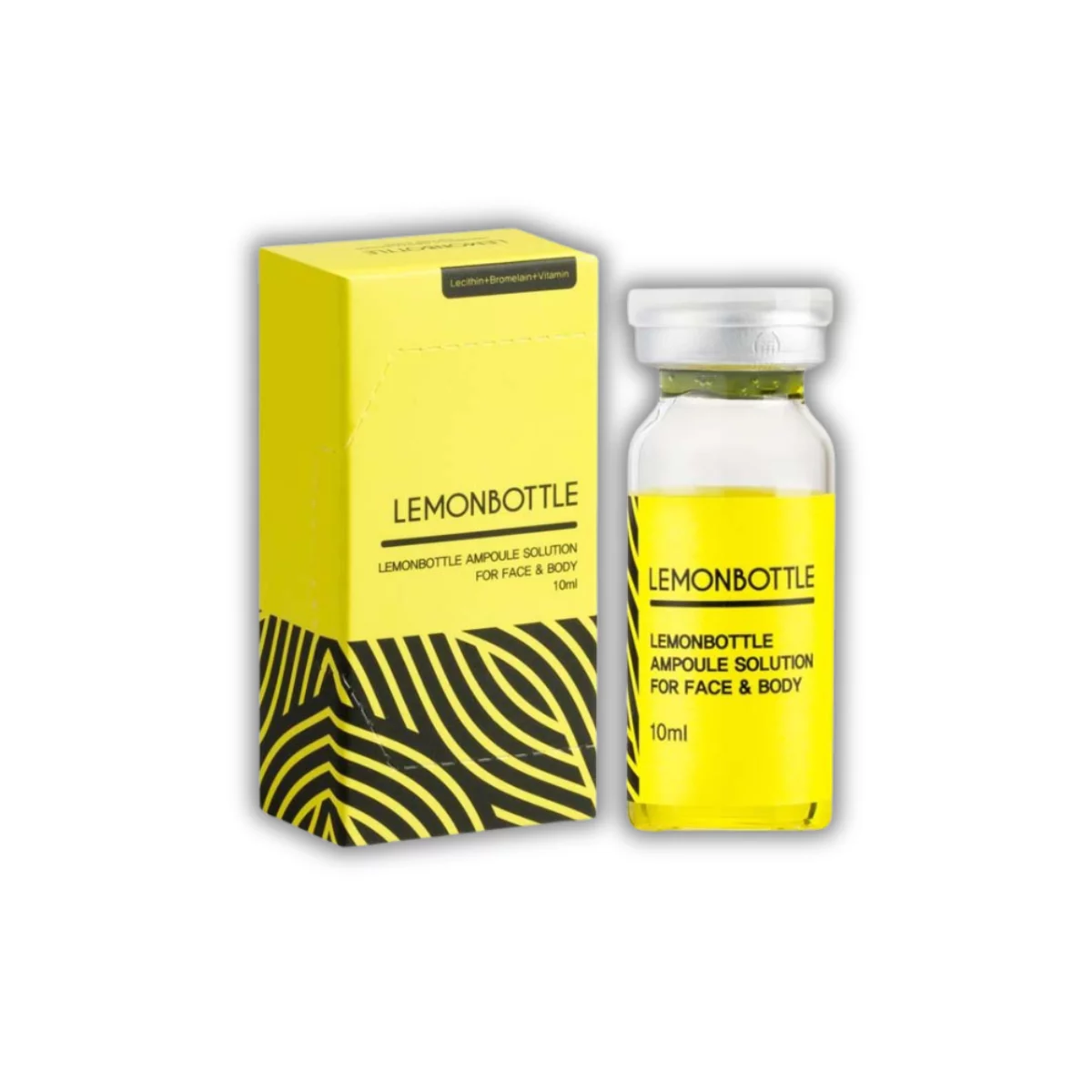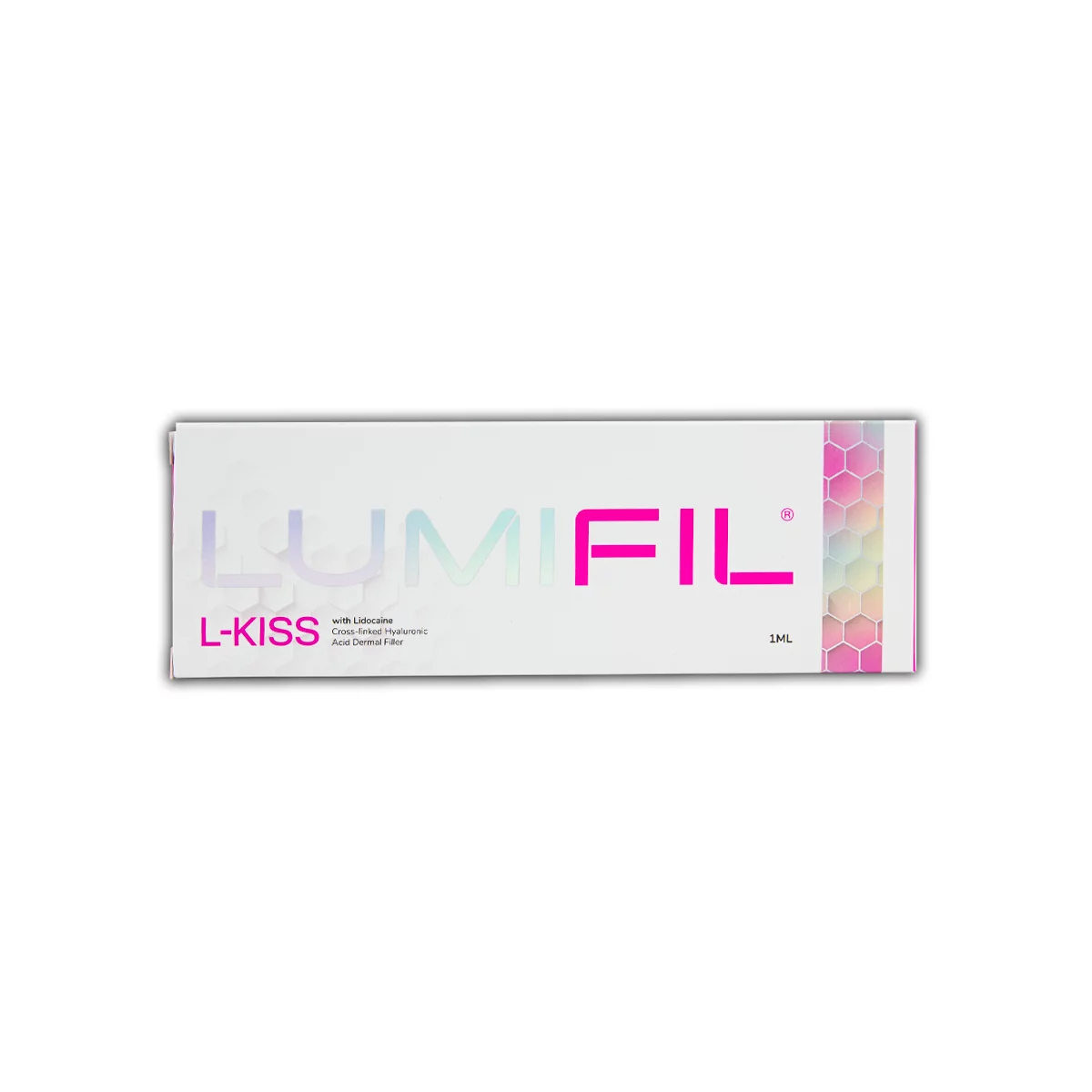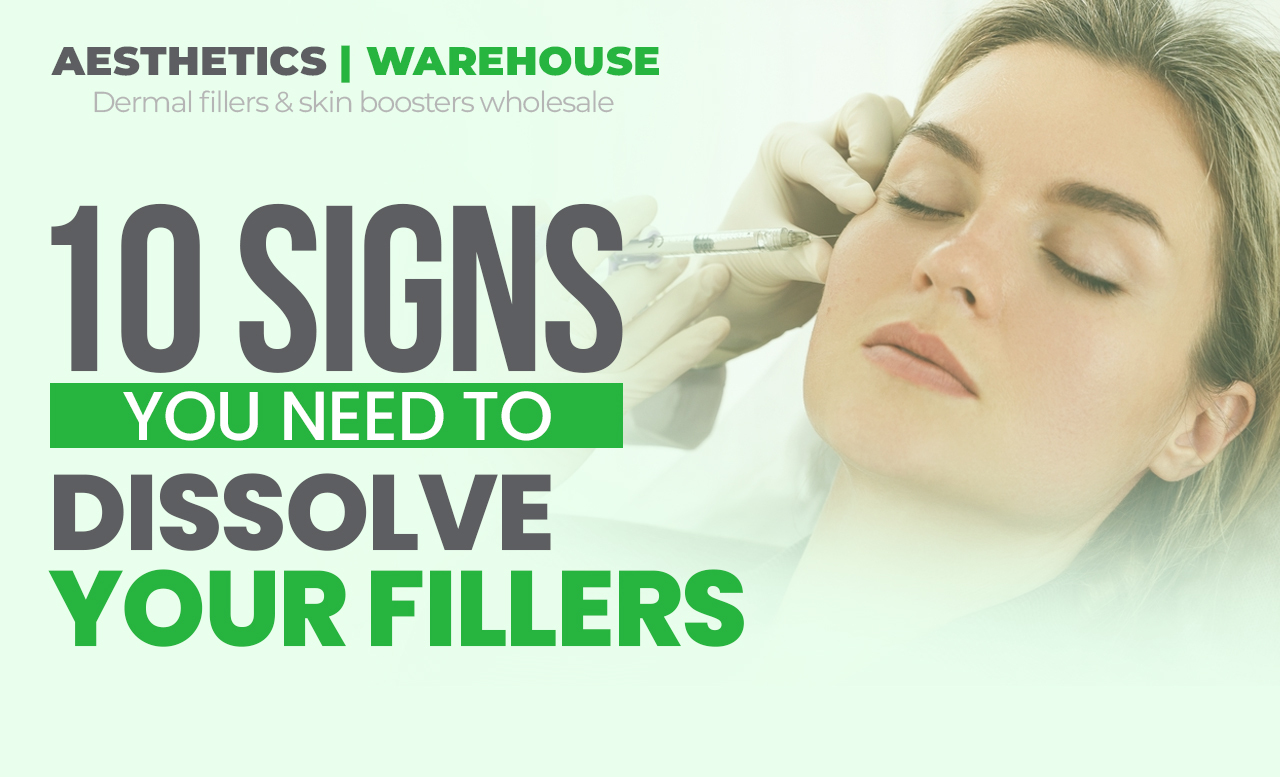Order by 3pm to Get Next Working Day Delivery
Save an extra 10%
-
HOT

Lemon Bottle ( 1 Vial )
£29.99 £24.99 ex. VAT -
HOT

Lumifil Kiss
£20.40 £17.00 ex. VAT
Subtotal: £24.99



Many people are getting dermal fillers to look younger and enhance their facial features. These gel shots go under the skin to add volume, smooth lines, or improve the contours of lips, cheeks, and under-eyes.
Most of the time, fillers look great. But sometimes, things go wrong. This can happen if the person giving the shots isn’t skilled, uses too much filler, or your body reacts badly. When this happens, you should get the filler dissolved.
That’s why we will explain 10 easy-to-spot signs that mean you might need to get your fillers dissolved. If you know these signs early, it can help you fix any problems before they get worse so that you look like yourself again.
Sometimes, after getting filler, the gel moves to a different place than where it was injected. You might see weird bumps or swelling near where you got the shots. This can look like blurry edges around your lips or strange lumps along your jaw.
Dermal filler can move to other areas, especially if it wasn’t put in correctly or if you frequently touch or massage it. When this occurs, dissolving it is the best way to correct it.
If you get too much filler, people can tell you’ve had work done. Your cheeks might look swollen, your lips too large, and your face look unnatural. This usually occurs slowly, over many treatments, as those small amounts of filler build up. If people say you look ‘changed’ instead of ‘refreshed,’ or if your face looks stiff or puffy, it probably means you need to get your fillers dissolved.
If your face looks uneven after fillers, that’s asymmetry. It means one side of your face looks different than the other. For example, one cheek might be bigger, one side of your lips might be fuller, or your smile look lopsided.
Everyone’s face is a little uneven, but if it’s obvious because of fillers, it can look strange and make your face look unbalanced. This usually happens because the filler wasn’t evenly injected or settled differently. Adding more filler rarely fixes it and usually makes it look even worse.
Sometimes, after getting filler, you’ll feel little lumps under your skin. You can feel them when you touch your face, and you might even see them as tiny bumps. This happens when the filler clumps up instead of spreading evenly, especially in thin-skinned areas around your eyes or lips.
If the bumps are new, gently massaging them might help. But if they’ve been there a while, or you can still feel them after a few weeks, they may won’t disappear alone. The best way to get rid of them is to dissolve the filler.
If fillers are injected too close to the top of the skin can make the area look bluish or greyish. This is called the Tyndall effect. It happens most often under the eyes, where the skin is fragile. It happens most often under the eyes because the skin there is delicate. The filler makes blue light bounce around, which makes it look like a bluish colour.
You might see a faint blue or grey shadow under your eyes, which looks weird and not like normal skin. This blue tint won’t go away by itself, and it can make your under-eye area look worse. If this happens, the only way to get rid of the blue colour is usually to dissolve the filler.
The most dangerous problems from fillers happen when the filler gets into or presses on a blood vessel. You need to see a doctor right away if this happens. Warning signs include:
If you see these terrible signs, call your doctor immediately or visit the hospital. Getting the filler removed quickly can prevent permanent damage.
Normal swelling after filler goes away after a few days. But if you’re still puffy after two weeks, that’s not normal. It means the swelling is lasting too long. Your face might always feel sore or puffy, even when you wake up.
If you have way too much swelling around the filler, it could mean your body doesn’t like it. If the swelling doesn’t go away, even after waiting and doing what your doctor told you, you may need to dissolve the filler to stop the swelling.
Sometimes, after getting filler, you might feel hard spots under your skin. Instead of feeling soft like normal, these spots feel firm or solid when touching or moving your face. This hardening can happen slowly, even months or years later. This tightness can make it hard to move your face naturally, which can lead to odd-looking smiles and speech.
These hard spots can develop on your face, especially your cheeks, lips, or under your eyes. They usually don’t go away by themselves and can get worse. The easiest way to fix those problems is to dissolve the filler so your face can move and feel like it used to.
It may also happen that your body doesn’t like the filler. This can cause allergic reactions or swelling. You might see a lot of redness, feel the heat, get puffy, or have itching that comes on quickly or lasts too long. Your skin might hurt when you touch it, and the reaction could spread to other areas, not just where the injection was given.
Even though it’s not common with hyaluronic acid fillers, you could still have a bad reaction. If you see these signs and they’re getting worse, tell your doctor right away. A real allergic reaction won’t go away on its own, so your doctor can quickly remove the filler causing the problem.
If you’re not happy with your filler, it’s okay to want it removed, even if nothing’s wrong medically. It may look weird, too much, or just not how you wanted. You might also notice your face moves differently, and you don’t feel like yourself anymore.
It’s normal to wait a little while for swelling to go down and to get used to minor changes. But if you’re still unhappy, it’s okay to do something about it. Your comfort and confidence matter and dissolution offers a way to reset and reconsider your options.
If you want to get rid of fillers, they inject hyaluronidase, which quickly breaks down hyaluronic acid fillers. The procedure is quick, taking just minutes in your provider’s office. You might get a little red, puffy, or bruised afterwards, but that goes away in a few days. The fillers mostly disappear in a day or two, but they might take a week to completely disappear. Your doctor will tell you how long to wait before getting new treatments.
You may also like to read: The safest dermal fillers for first-time users
While fillers can enhance your appearance, knowing when to remove them is just as important. If you see any of the ten problems we discussed, talk to a doctor about dissolving them. Taking fillers out is safe and can fix problems and make you look like yourself again. You deserve to feel good about your face.
You might feel some mild discomfort, but most providers use numbing agents to minimise pain.
Yes, dissolving fillers is a safe way to reverse the effects if you’re unhappy with your appearance.
Most fillers dissolve within a few days to a week after the dissolving treatment.
Yes, after a healing period, you can safely get new fillers.
No, dissolving fillers won’t cause sagging; it simply returns your face to its pre-filler state.